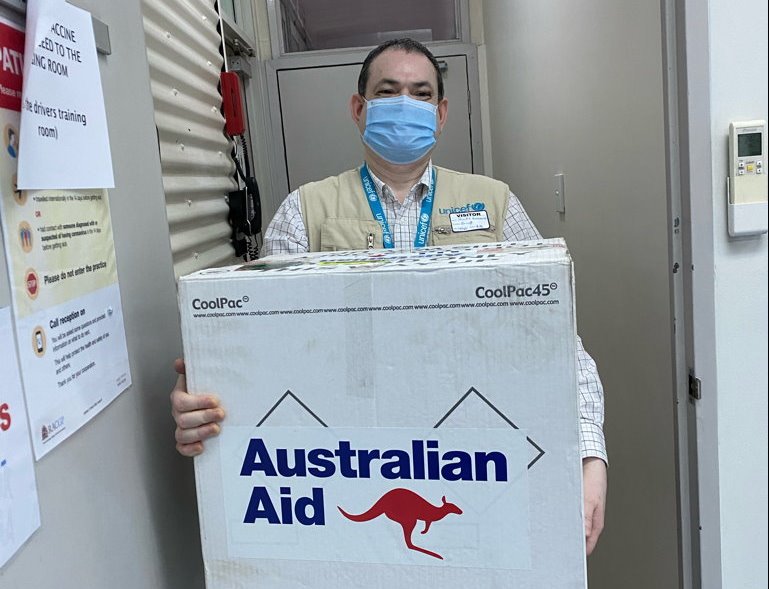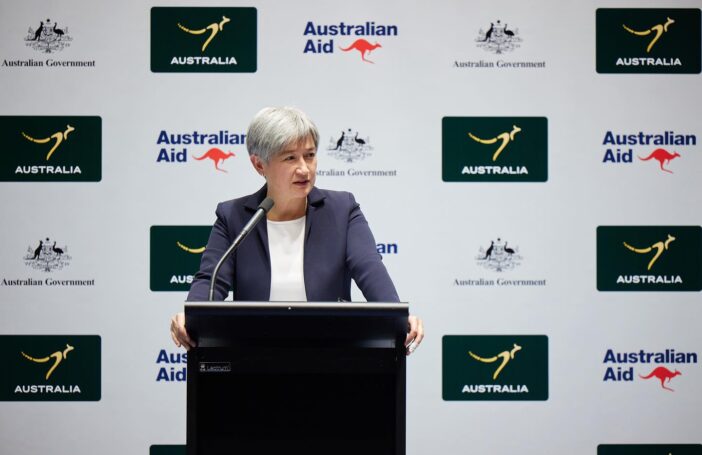The various and evolving ways in which the Australian government has described the objectives of the aid program is a matter of enduring interest, at least to me. It speaks to how we think of foreign aid, and why we give it.
The Downer objective from 1996 is a good place to start. It was:
Advancing Australia’s national interest by assisting developing countries to reduce poverty and achieve sustainable development.
That formulation was perhaps too full-on, and in 2006 it was changed to the slightly more subtle:
To assist developing countries to reduce poverty and achieve sustainable development in line with Australia’s national interest.
The Rudd-Gillard government changed the objective to put even more emphasis on poverty and less on the national interest:
The fundamental objective of Australian aid is to help people overcome poverty. We work to improve the lives of those living in conditions far below what Australians find acceptable. We focus our resources and effort on areas of national interest, and where Australia can make a real difference.
When AusAID was integrated into DFAT in 2013, the objective reverted to a Downeresque formulation:
Australia’s aid program will promote Australia’s national interests through contributing to international economic growth and poverty reduction.
In 2014, Julie Bishop released her “new aid paradigm” but she didn’t change the objective:
Promoting Australia’s national interests by contributing to sustainable economic growth and poverty reduction.
And that was it until COVID-19 and the May 2020 Partnerships for Recovery document. In that, the objective of the aid program was defined in relation to COVID-19 response and recovery, but above that was articulated a new vision:
A stable, prosperous, resilient Indo-Pacific in the wake of COVID-19.
That vision, in somewhat modified form, has now been made the objective of the aid program, with the new international development policy declaring that:
The objective of Australia’s development program is to advance an Indo-Pacific that is peaceful, stable, and prosperous.
I don’t know how much it matters, but in my view this objective is problematic for three reasons.
First, the pre-COVID objectives were quite modest. They talked about aid “assisting” (Downer), “helping” (Rudd-Gillard) or “contributing” (Bishop). That modesty has been lost. Can aid advance prosperity etc., as against assisting in its advancement? Even when it works, aid is a minor determinant of national outcomes.
Second, leading off with the objective of a peaceful region is odd. The first two sentences of the section on the objective of the aid program (which are the first two of the report) are: “Our region is under pressure. We face the most challenging strategic circumstances in the post-war period.” I would have thought strategic circumstances were more challenging during the Cold War. But, leaving that aside, these sentences point to China, and therefore the objective of a peaceful region, which appears on the same page, is most naturally interpreted as an aspiration to avoid war, specifically war with China. There is a brief mention of peacebuilding on page 45 of the new aid policy, but that’s not what the objective of peace is about. I really can’t see how aid will prevent any armed conflict involving China, or any other power for that matter.
Third, formulating the objective of aid with reference to peace, stability and prosperity diminishes the importance of growth and poverty reduction. Poverty reduction is mentioned in the section on objectives but only as a requirement for achieving that trio of peace, stability and prosperity. This is quite different to the pre-2020 objectives which were clearly centred around poverty reduction and economic growth. Less importance for growth and poverty reduction leaves the door open for more importance to be given to diplomatic imperatives.
Whether one likes the new objective or not, it is striking how similar it is to the COVID-19 vision. The old days where the Coalition stressed growth and the national interest, and Labor poverty reduction and Australian generosity are long gone.
The entire COVID-19 strategy was done, as it had to be, in a hurry, and was meant to be temporary, for the COVID-19 period. And yet that strategy has clearly had an enduring legacy. Foreign policy perceptions and objectives fundamentally changed between 2014 (Bishop) and 2020 (COVID-19). That the Coalition’s COVID-19 vision for aid is now, essentially, Labor’s post-COVID-19 objective for the same shows how bipartisan the shift in foreign policy sentiment has been and how China, even though it is not mentioned in the new international development policy, is in fact front and centre.
For more on the early history of the objective of the Australian aid program, including references, see this 2013 blog.
All blogs on the 2023 Australian international development policy can be found here.





Hello Stephen
It seems to me that the most frequently used term is “poverty reduction.” And in my view that platitude is problematic.
If we take out nearest neighbour as an example, we see that despite nearly five decades of Australian assistance since independence, in practical terms this objective has slipped further backward for the majority of the population.
“Poverty reduction” has a definite neo colonist edge to it and the promotion of economic growth and resource exploitation has exacerbated a what has always been a delicate situation.
For many in a country like Papua New Guinea the notion of poverty is misplaced. When you live on your own land and grow or catch your own food, poverty is not the issue. Empowerment and participation in decision making and nation building is.
Our aid focus has been way too much directed at propping up systems we bequeathed to a fledgling nation in 1975: systems that all to often have been found to be inappropriate for the environment into which they were thrust.
If we wish to be helpful good neighbours, I believe, we need to drop the claptrap objectives that serve no purpose and focus on empowering people on their own terms to create the lives they wish for themselves.
Lives that potentially include access to appropriate economic empowerment, health and education services as defined and envisioned by them – not us.
Hello Stephen,
While any indicator has its strengths and weaknesses, poverty rates typically account for non-market sources of income, including food grown for own consumption. Many are caloric, and the idea that hunger and poverty is not an issue in PNG is not at all borne out in the data. Recall this lively post and comment a while back:
https://devpolicy.org/png-the-hungry-country-20210520/
Best,
“Our aid focus has been way too much directed at propping up systems we bequeathed to a fledgling nation in 1975: systems that all to often have been found to be inappropriate for the environment into which they were thrust.”
Yes, though inappropriate in any environment. No country has ever succeeded with a single chamber of parliament consisting of single-member electoral districts. It didn’t work in New Zealand, didn’t work in Northern Ireland, didn’t work in west Africa.
It flouts the separation of powers rule: the executive controls the legislature. We see it in all the Australian lower houses. Without the curb of an upper house, the politicians have open slather.
PNG, Solomons, and Vanuatu are competing to be the first country in the world to make the single chamber single-member structure work. Ridiculous.
Thanks Stephen
If I might add some comparative figures to your concerns about Australia’s contributions to reducing poverty around our world (or at the least, within the Indo-Pacific region).
From the World Bank (Nov 2022):
“For three decades, the number of people living in extreme poverty— defined as those who live on less than $2.15 per person per day at 2017 purchasing power parity—was declining. But the trend was interrupted in 2020, when poverty rose due to the disruption caused by the COVID-19 crisis. The number of people in extreme poverty rose by 70 million to more than 700 million people. The global extreme poverty rate reached 9.3 percent, up from 8.4 percent in 2019.
…………..
“The recent crises have pushed the world further off track from the global goal of ending extreme poverty by 2030. Given current trends, 574 million people—nearly 7 percent of the world’s population—will still be living on less than $2.15 a day in 2030. And the challenge is made harder by the fact that extreme poverty is concentrated in parts of the world where it will be hardest to eradicate: in Sub-Saharan Africa, in conflict-affected areas, and in rural areas.”
US$2.15 a day is an unimaginable figure of personal hunger, distress and lack of opportunity.